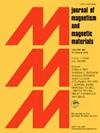Magnetorheological and magnetic actuation behaviour of solvent cast 4D printed styrene-ethylene-butylene-styrene block copolymer based magnetorheological elastomeric materials
IF 2.5
3区 材料科学
Q3 MATERIALS SCIENCE, MULTIDISCIPLINARY
引用次数: 0
Abstract
In this work styrene-ethylene-butylene-styrene (SEBS) block copolymer based smart magnetorheological elastomeric (MREs) materials have been additively manufactured using solvent-cast 4D Printing (SC-4DP) technique. The effect of carbonyl iron powder (CIP) content on the particle distribution, particle–matrix adhesion, surface and layer morphology of the 4D Printed MRE sample was investigated. CIP particles were observed to be well embedded and dispersed up to 60 wt% content. However, at higher CIP content the tendency of the particles to agglomerate increased significantly. Furthermore, samples with CIP content ≥70 wt% showed poor particle–matrix adhesion and possessed inter-layer coalescence defects. Investigations were also performed to evaluate the magnetic properties of MREs at room temperature. Magnetorheological behaviour was studied to evaluate the effect of varying magnetic field on dynamic viscoelastic properties. Magnetorheological effect increased from ∼79 % to ∼211 % with an increase in CIP content. However, the particle–matrix adhesion also significantly affected the magnetorheological effect for higher CIP content samples. Magnetic actuation capability of flexible MRE samples was evaluated for gripper-based application. SC-4D Printed flexible grippers were able to successfully grip, lift, and drop both the soft deformable and rigid freeform profile objects in different media (air and sodium hydroxide solution) suggesting suitability for remotely actuated gripper-based applications.

基于苯乙烯-乙烯-丁烯-苯乙烯嵌段共聚物的溶剂浇注 4D 印刷磁流变弹性材料的磁流变和磁致动特性
在这项研究中,使用溶剂铸造 4D 印刷(SC-4DP)技术,以苯乙烯-乙烯-丁烯-苯乙烯(SEBS)嵌段共聚物为基础,添加制造了智能磁流变弹性体(MRE)材料。研究了羰基铁粉(CIP)含量对 4D 印刷 MRE 样品的颗粒分布、颗粒与基体的粘附性、表面和层形态的影响。在 CIP 含量为 60 wt% 的情况下,CIP 颗粒可以很好地嵌入和分散。然而,CIP 含量越高,颗粒团聚的趋势就越明显。此外,CIP 含量≥70 wt% 的样品显示出颗粒与基质的粘附性差,并存在层间凝聚缺陷。还对室温下 MRE 的磁性能进行了评估。研究了磁流变行为,以评估不同磁场对动态粘弹性能的影响。随着 CIP 含量的增加,磁流变效应从 ∼79 % 增加到 ∼211 %。然而,对于 CIP 含量较高的样品,颗粒与基体的粘附力也会对磁流变效果产生显著影响。针对基于抓手的应用,对柔性 MRE 样品的磁驱动能力进行了评估。SC-4D 印刷柔性机械手能够在不同介质(空气和氢氧化钠溶液)中成功抓取、提起和放下软质可变形和硬质自由变形轮廓物体,这表明它适合基于机械手的远程驱动应用。
本文章由计算机程序翻译,如有差异,请以英文原文为准。
求助全文
约1分钟内获得全文
求助全文
来源期刊

Journal of Magnetism and Magnetic Materials
物理-材料科学:综合
CiteScore
5.30
自引率
11.10%
发文量
1149
审稿时长
59 days
期刊介绍:
The Journal of Magnetism and Magnetic Materials provides an important forum for the disclosure and discussion of original contributions covering the whole spectrum of topics, from basic magnetism to the technology and applications of magnetic materials. The journal encourages greater interaction between the basic and applied sub-disciplines of magnetism with comprehensive review articles, in addition to full-length contributions. In addition, other categories of contributions are welcome, including Critical Focused issues, Current Perspectives and Outreach to the General Public.
Main Categories:
Full-length articles:
Technically original research documents that report results of value to the communities that comprise the journal audience. The link between chemical, structural and microstructural properties on the one hand and magnetic properties on the other hand are encouraged.
In addition to general topics covering all areas of magnetism and magnetic materials, the full-length articles also include three sub-sections, focusing on Nanomagnetism, Spintronics and Applications.
The sub-section on Nanomagnetism contains articles on magnetic nanoparticles, nanowires, thin films, 2D materials and other nanoscale magnetic materials and their applications.
The sub-section on Spintronics contains articles on magnetoresistance, magnetoimpedance, magneto-optical phenomena, Micro-Electro-Mechanical Systems (MEMS), and other topics related to spin current control and magneto-transport phenomena. The sub-section on Applications display papers that focus on applications of magnetic materials. The applications need to show a connection to magnetism.
Review articles:
Review articles organize, clarify, and summarize existing major works in the areas covered by the Journal and provide comprehensive citations to the full spectrum of relevant literature.
 求助内容:
求助内容: 应助结果提醒方式:
应助结果提醒方式:


